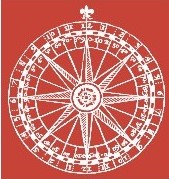The Development and Self-Definition of Penitential Confraternities in Seville, Spain, 1538–1563
During the sixteenth century many Catholics yearned for an active role in lay religiosity. One avenue to achieve this was through membership in a penitential confraternity. In the first half of the sixteenth century, the pioneering penitential…
Listée dans Article | publication par groupe Iter Community
Version 1.0 - publiée le 16 Sep 2025
Sous licence Creative Commons BY-NC 4.0
Description
During the sixteenth century many Catholics yearned for an active role in lay religiosity. One avenue to achieve this was through membership in a penitential confraternity. In the first half of the sixteenth century, the pioneering penitential confraternities concentrated on the development of membership requirements and how to translate the imitatio Christi on a secular level. The organization of the second generation of Sevillian penitential confraternities coincided with the Council of Trent (1545–1563). As Church leaders met to define their faith based on an existing foundation and to justify their vocations, the same anxiety and struggles were present on the local lay level as the subsequent generation of penitential confraternities sought to uniquely define themselves through faith and attempted to control their public persona.
Citer ce travail
Les chercheurs doivent citer ce travail comme suit :
Tags
Notes
Original publication: Eichele, Reanne. “The Development and Self-Definition of Penitential Confraternities in Seville, Spain, 1538–1563.” Confraternitas 21 (1): 2010. 23-44. DOI: . This material has been re-published in an unmodified form on the Canadian HSS Commons with the permission of Iter Canada / Confraternitas. Copyright © the author(s). Their work is distributed by Confraternitas under a Creative Commons Attribution-NonCommercial 4.0 International License. For details, see https://creativecommons.org/licenses/.
Aperçu de la publication
Iter Community
This publication belongs to the Iter Community group.
When watching a publication, you will be notified when a new version is released.
